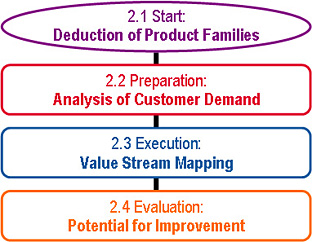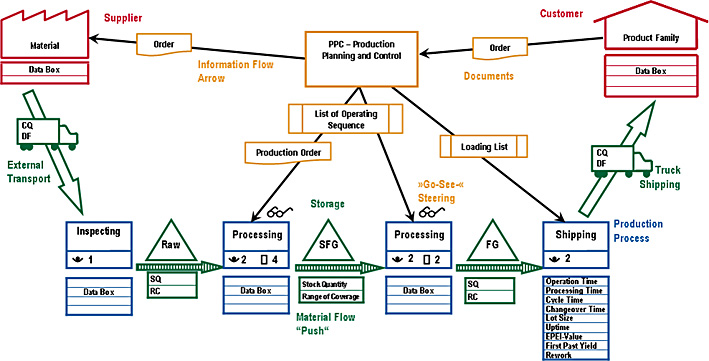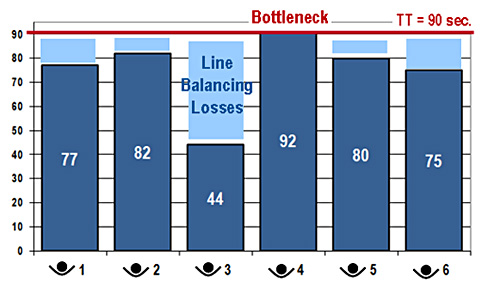Content
2 Value Stream Analysis
The value stream analysis is the perfect method for clear and comprehensive current-state mapping. This is mainly enabled by taking into consideration production processes as well as material and information flows, but also by visualization with the aid of simple symbols.
Our goal is the efficient mapping and clear depiction of the currently existing situation in a factory. Consistent assumption of the customer's point of view is the focal concept of the value stream analysis, because the customer determines the general production requirements as well as the demands placed on each individual production process. The analysis is conducted via snap-reading method to represent typical factory conditions.

2.1 Product Families
Product families are segments isolated from the rest of the factory to be analysed separately and independently. In the deduction of product families, products with identical resource requirements and similar production sequences are grouped together.

2.2 Customer Demand
Value stream design aims at a customer-oriented production. The value stream analysis expresses customer demand in customer takt time. Calculated from the mean piece-related demand it sets the rhythm for the production.
2.3 Production
Current-state mapping is always conducted on-site in the factory. The central result of a value stream analysis therefore is a value stream drawing with symbols. The value stream depiction differentiates between the production processes with their respective parameters, the material flows with their inventories and the information flow with its business processes and its documents.

2.4 Potential
The value stream depiction can be used to indicate improvement potential with respect to the production process.
Firstly, the timeline shows where bottlenecks cause holdups in the production flow and determines the potential for lead time reductions. The relation between lead time and operation time, i.e. the degree of flow, indicates the sluggishness of a production.

Secondly, a comparison of the efficiency of the individual production processes with the aid of the operator balance chart enables a qualitative layout evaluation of the resources with a view to each other.
Accordingly, design guideline 1 applies: Adjustment to takt time - The capacity availability of a production is to be adjusted to the customer takt time throughout.

Thirdly, immediate improvement measures may selectively be triggered in cases of easily recognizable weaknesses of the production procedure without initiating major conceptional overall changes. The value stream depiction also reveals the relevant complexity and transparency levels of the entire production procedure.
